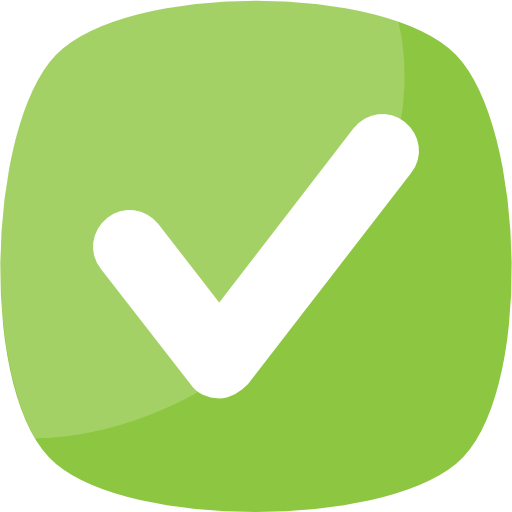
Table of Contents
A Step-by-Step Guide to Planning Your Website Project
Launching a new website can feel overwhelming. From choosing the right design to figuring out the best features, there are countless decisions to make. But here’s the good news: with careful planning, your website project can be a smooth, even enjoyable, experience. A well-planned project not only ensures your website looks and functions the way you want but also helps you achieve your business goals. At Web Designer Near Me, we understand that the starting point can often be the most daunting. That’s why we’ve created this website planning guide to walk you through the essential steps to planning a successful website project. We also simplify the search for a skilled web designer by connecting you with qualified professionals who can bring your vision to life. This guide will cover everything from defining your purpose to selecting the right web designer, helping you lay a solid foundation for your online presence. Let’s dive in!
Define Your Website’s Purpose and Goals
Before you even start thinking about colors or layouts, it’s crucial to pinpoint why you need a website. What do you hope to achieve? Do you want to sell products directly online, or is your goal to generate leads and showcase your services? Perhaps it’s about building a community or establishing yourself as a thought leader. Defining these objectives early will shape every subsequent decision you make. For example, if your aim is to increase online sales, you’ll need a robust e-commerce platform and a clear call-to-action structure. If you want to improve customer engagement, you might focus on creating a content-rich blog with regular updates and social media integration. Specific goals help to guide the entire process, turning your vision into a tangible outcome.
Identify Your Target Audience
Knowing your audience is just as vital as knowing your purpose. Who are you trying to reach with your website? What are their needs, preferences, and online habits? Creating user personas—fictional representations of your ideal customers—can be incredibly helpful. For instance, if you’re selling handcrafted jewelry, you might create a persona of a young professional who values unique, ethical pieces. This will influence your site’s design, from color palettes to font choices, as well as the tone and style of your content. By understanding your audience, you can tailor your website to resonate with them, making it more effective.
Plan Your Website Content
Content is the lifeblood of your website. It’s what attracts visitors and keeps them engaged. Don’t leave content creation to the last minute. Before you even think about a launch date, carefully plan your key pages. Here are the critical pages to include in your content plan:
- Home: This is your digital front door, it needs to immediately grab attention and clearly communicate what you offer.
- About Us: This is where you tell your brand’s story, build trust, and show personality.
- Services/Products: Clearly present what you sell or the services you offer with details, and high-quality visuals.
- Blog: If you plan to share updates or valuable information, this is where it lives.
- Contact: Make it easy for potential customers to get in touch with a clear form or contact details.
Remember, all your content should be engaging, informative, and, importantly, SEO-friendly to help your website rank higher in search engine results. If writing isn’t your forte, don’t hesitate to hire a professional copywriter – their skills can significantly enhance the effectiveness of your site’s message.
Decide on Features and Functionality
Your website’s functionality goes beyond its looks; it’s about what your website does. What essential features will it need? This depends heavily on your purpose and target audience. Here’s a checklist of common features to consider:
- E-commerce capabilities: Integrated online store with secure payment gateways.
- Appointment booking systems: Online scheduling for your services.
- Contact forms or live chat: Easy ways for customers to reach you.
- Blog functionality: For publishing and managing blog content.
- Search function: Allowing users to find content quickly.
- Social media integration: Connecting your website to your social channels.
It can be hard to decide on all the features your website might need, but a web designer can help guide you on what is appropriate and important for your project.
Research and Gather Inspiration
Before settling on a design, take some time to explore competitor websites. What design elements do you find appealing and effective? What layouts are easy to navigate? Start creating a “mood board” with images of designs, color palettes, and font styles you like. This visual reference point will be a great tool for you, and your designer, helping create a website that aligns with your taste. Remember, the goal isn’t to copy; it’s to gather inspiration and find what resonates with your brand.
Set Your Budget for Your Website Project
Website projects vary dramatically in cost. A basic informational site will naturally cost less than an intricate e-commerce platform with advanced features. A simple website could cost a few thousand, while a more complex site could reach tens of thousands. Before engaging a designer, establish a realistic budget. This will enable you to communicate clearly to designers about your limits and expectations. One of the benefits of using Web Designer Near Me is that you’ll get quotes from various designers, allowing you to compare costs and find the best fit for your budget, ensuring there aren’t any surprises along the way. This is an essential step when learning how to plan a website.
Fill Out Your Project Requirements
Once you have a clear vision, it’s time to share your project details with us. The process is simple. Head to the Web Designer Near Me website, and fill out the straightforward form. You’ll be asked about:
- Your Project Goals: What you want your website to achieve (sales, leads, information sharing etc).
- Preferred Features and Designs: Your preferred functionality, and design inspiration.
- Budget Range: Your allocated budget for the project.
The more specific you are, the better we can match you with qualified designers that fit your needs. This ensures you receive tailored quotes from designers who understand your vision and can deliver.
Review Quotes and Choose a Designer
Once we’ve sent your project to our qualified designers, you’ll receive between 3-5 quotes for your project. Now is the time to carefully review and compare. Consider not just the price, but also the designer’s experience, their portfolio, and their communication style. Did you feel like they listened to your ideas? Do their previous projects align with the vision you have for your website? A good designer is not just skilled; they’re also a great collaborator. Choose someone you feel confident communicating with and who understands your project needs. Finding the right web designer is crucial for project success.
Conclusion
Planning your website project doesn’t have to be daunting. By taking these steps, you’ll set yourself up for a smooth, efficient process, leading to a website that meets your goals and exceeds your expectations. From defining your purpose and identifying your audience to comparing designer quotes, each step brings you closer to launching a successful online presence. Ready to bring your website to life? Head to Web Designer Near Me and take the first step towards finding your perfect web design partner. We are here to connect you with the best web design talent so you can be confident you are in good hands.


